
Reviving Lost Opportunities: Powerful Abandoned Cart Recovery Strategies for Web Designers
Last update: 7 March 2024 at 01:50 pm
Ever felt that sharp pang of disappointment when a potential customer quits their shopping journey on your ecommerce site? You’re not alone.
Recent research shows that a whopping 70% of online shopping carts are abandoned before checkout. That’s a staggering pile of missed opportunities in our hyper-competitive ecommerce landscape, leaving businesses to wade through potential revenue losses.
Luckily, it’s not all doom and gloom. We’ve prepared some powerful abandoned cart recovery strategies for your web design.
When used right, they’re a lifeline – reviving lost chances and turning cart deserters into repeat customers. Think of them as the ecommerce magic equivalent of transforming lead into gold.
Let’s see how you can fix your website’s shopping cart abandonment issues.
Abandoned Cart Recovery Techniques
Get Proactive with Recovery Emails
Abandoned cart emails aren’t just “Come back, we miss you!” notes. They’re strategic masterstrokes for re-engaging shoppers who’ve left your online store at the checkout page.
The trick to a compelling recovery email lies in your tools and techniques. Tools such as Mailchimp, Klaviyo, and Brevo specialize in crafting personalized, automated marketing emails to reach cart abandoners at the right time.
You can also consider these tried-and-tested techniques for supercharging your cart abandonment emails:
- Timing is everything: Fire off the first email within an hour of cart abandonment. Follow up strategically over the next few days.
- Add a personal touch: Every email should be unique to the customer. Tools like Klaviyo allow for deep customization, including specific product images and details to rekindle interest.
- Sweeten the deal: Incentives work wonders. Entice customers with discounts, free shipping, or limited-time offers.
- Keep it short and sweet: Keep your message clear, simple, and focused on abandoned items.
- Leverage the power of persuasion: Employ social proof and scarcity tactics like ratings, reviews, and stock levels to add an extra push toward completing a purchase.
Let’s see some of these techniques in action.
Example
Shop Solar Kits, a solar systems supplier, tackles cart abandonment emails powerfully.
First, they send an email immediately after abandoning the purchase:

Source: shopsolarkits.com
Then, after a few hours, they follow up with a slight nudge:
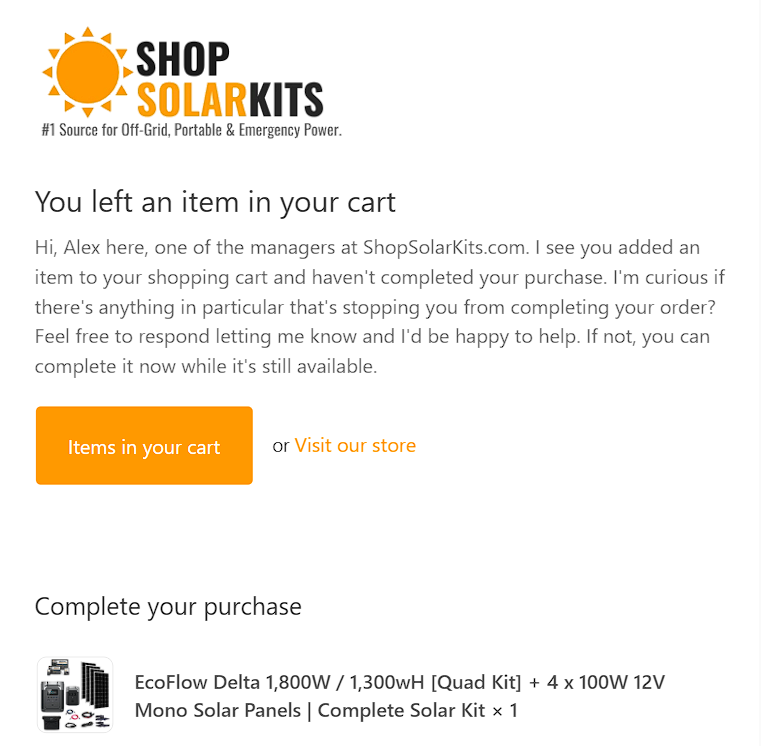
Source: shopsolarkits.com
Finally, 36 hours after abandoning the purchase, they sent another reminder email:

Source: shopsolarkits.com
Adding a discount code at this stage is the perfect time to hook them back in.
As you embrace these techniques and tailor them to your online store, remember – abandoned cart recovery isn’t about guilt-tripping shoppers but reminding them of the value they’ve left behind.
Implement On-Site Cart Recovery Tools
On-site cart recovery tools are a great addition to your shopping cart abandonment recovery efforts. These digital superheroes come in the form of plugins and popups designed to prevent shoppers from abandoning their carts in the first place.
Exit-Intent Popups
Tools like OptinMonster’s Exit Intent® track the user’s mouse movements. A last-minute deal or reminder pops up when a customer is about to exit. It’s like a virtual salesperson making a final pitch.
CartStack
A specialized tool for recovering lost sales. CartStack combines abandoned cart email campaigns, on-site reminders, and text message follow-ups.
WooCommerce Cart Abandonment Recovery
As its name suggests, this WordPress plugin recovers abandoned carts in WooCommerce stores. It also enables the creation of customized email templates for follow-ups.
Yotpo
Known for its social proof features, Yotpo also provides cart recovery solutions. It lets you send personalized emails or push notifications to recover lost sales.
Privy
Another tool that merges abandoned cart emails with on-site popups. With Privy, you can design appealing reminders encouraging shoppers to complete their purchases.
All these tools can work wonders for your abandoned cart recovery strategy. The trick is to integrate them seamlessly into your website design, making them helpful reminders rather than intrusive annoyances.
Make Use of Retargeting
Think of retargeting as that persistent and thoughtful friend who won’t let you forget your unfinished business. It involves smart targeting customers who’ve left their shopping carts high and dry, nudging them towards completing their purchase with strategic retargeting ads.
Here are some tools that can help you harness the power of retargeting:
- Meta Pixel: This tool tracks visitors on your site and later shows them tailored ads on Facebook. It’s a slight nudge, reminding them of the great deal they left in their cart.
- Google Remarketing: This tool is similar to Facebook, but it spreads its net wider. Google shows your tailored ads to cart abandoners as they surf other sites on the web.
- AdRoll: AdRoll takes retargeting to the next level, combining email and retargeting ads. It’s an all-in-one tool that keeps your store front and center in your shoppers’ minds.
That’s retargeting in a nutshell. A little push, a gentle reminder, a soft tap on the shoulder that says, “Hey buddy, you forgot something.”
Abandoned Cart Prevention Tactics
Pay (Serious) Attention to Your Checkout UX
In the world of complex ecommerce, where products aren’t simply plucked off the shelf, your checkout process’s User Experience (UX) can make or break your abandoned cart recovery strategy.
Expert UX design can transform a potentially complex and tiring process into an enjoyable customer experience. When dealing with multifaceted, customizable products, ensure to make your checkout UX a priority.
Example
Let’s take a look at the GetSafe checkout process.
Purchasing from them demands a high level of shopper interaction and personalization since they’re selling customized medical alert systems.
A poorly designed process could easily exhaust and confuse customers, resulting in shopping cart abandonment. But, with the help of expert UX design, they’ve turned this potential minefield into a walk in the park.
At GetSafe, the “Pricing” page starts the shopping journey. It’s clean, easy-to-navigate, and the pricing of each component is clear. There are no hidden costs or mysterious fees that could scare away potential customers.
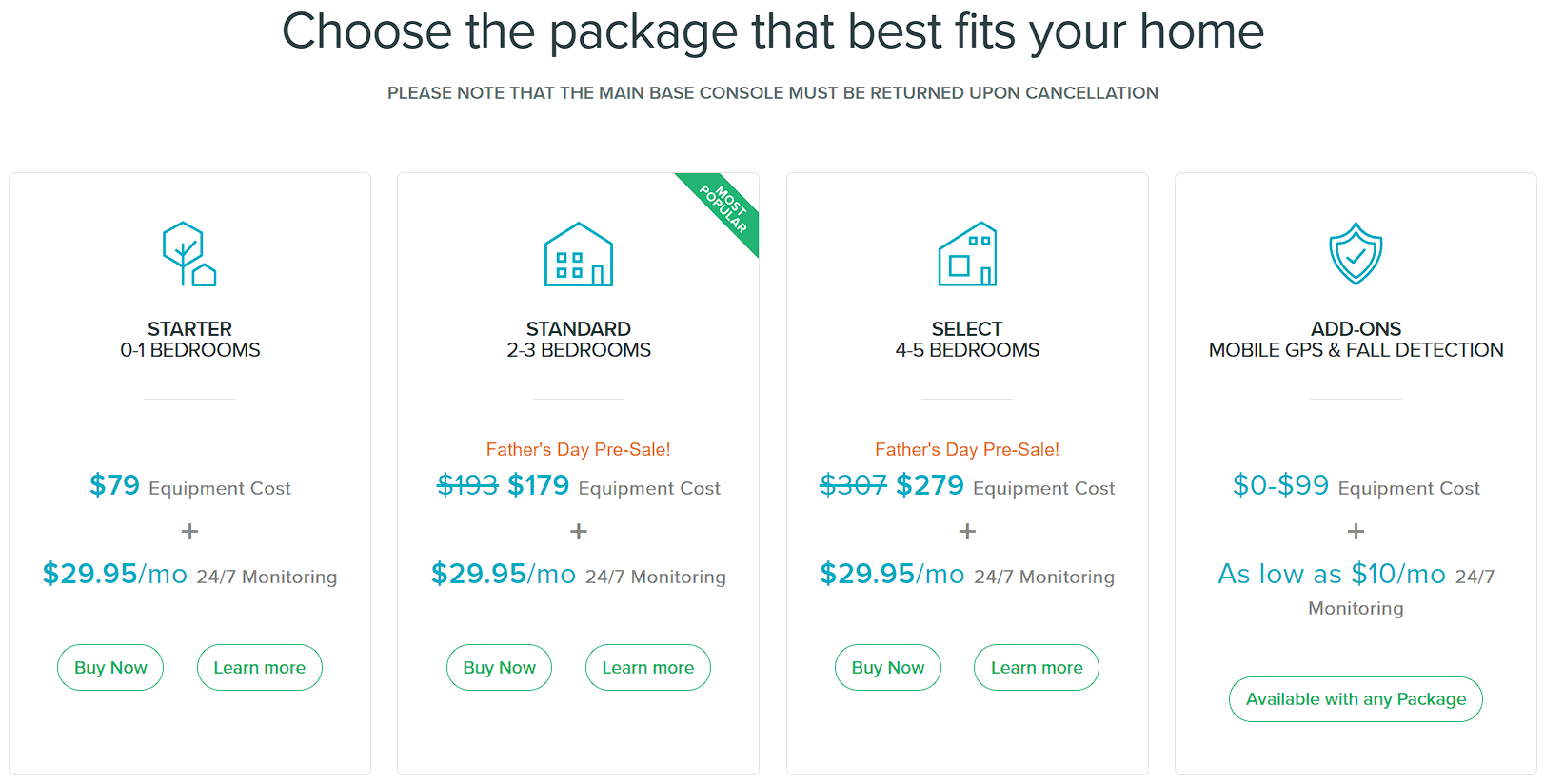
Source: getsafe.com
Moving on, you’ll find the “Add-Ons” section. It’s intuitive and interactive, allowing customers to pick and choose components based on their specific needs. Each choice adds the item to the shopping cart in real-time, giving customers a sense of control and transparency.
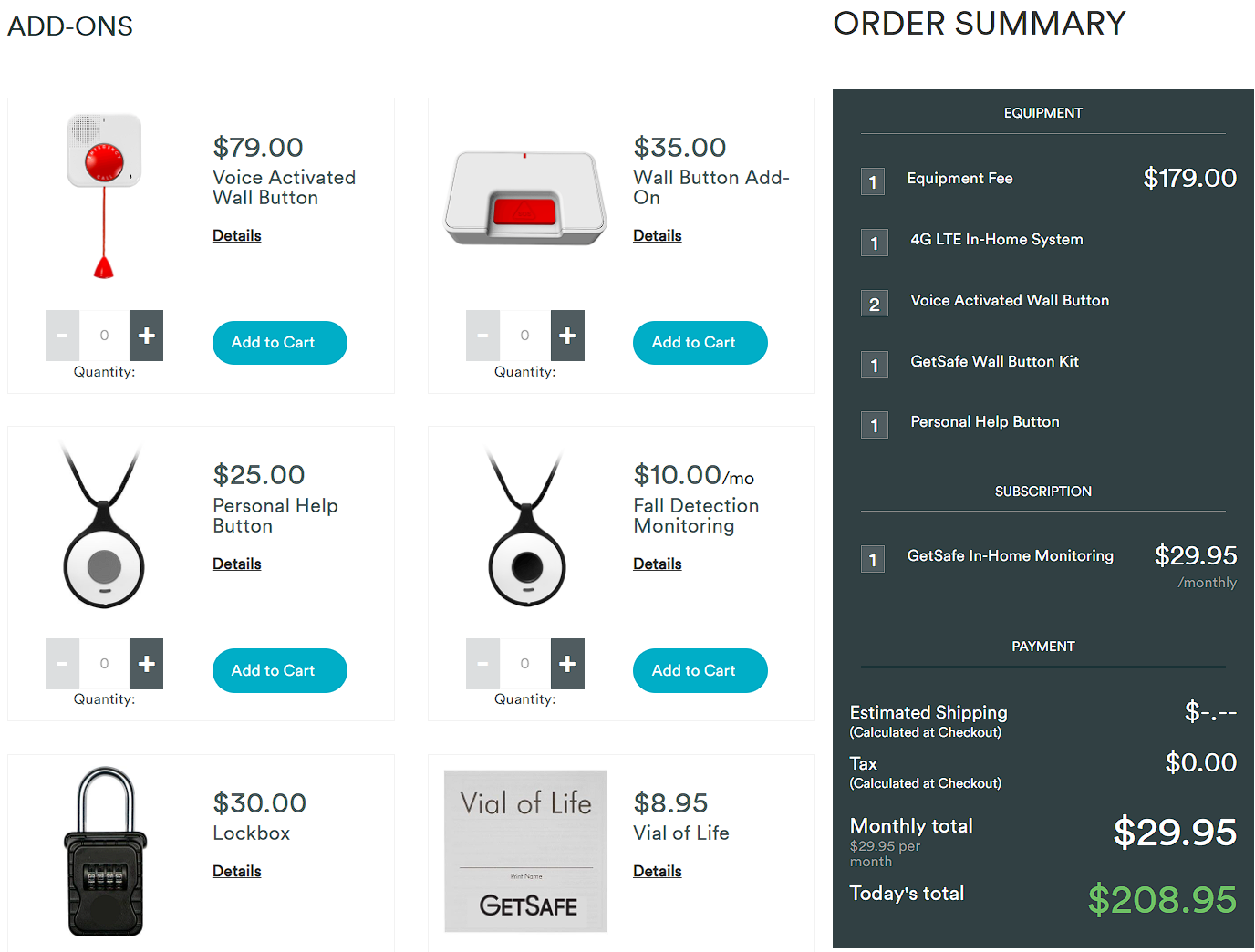
Source: getsafe.com
Then, there’s the “Checkout” section. This is where GetSafe truly shines. The process is intuitive, smooth, and logical, providing a neat layout for customers to enter details.
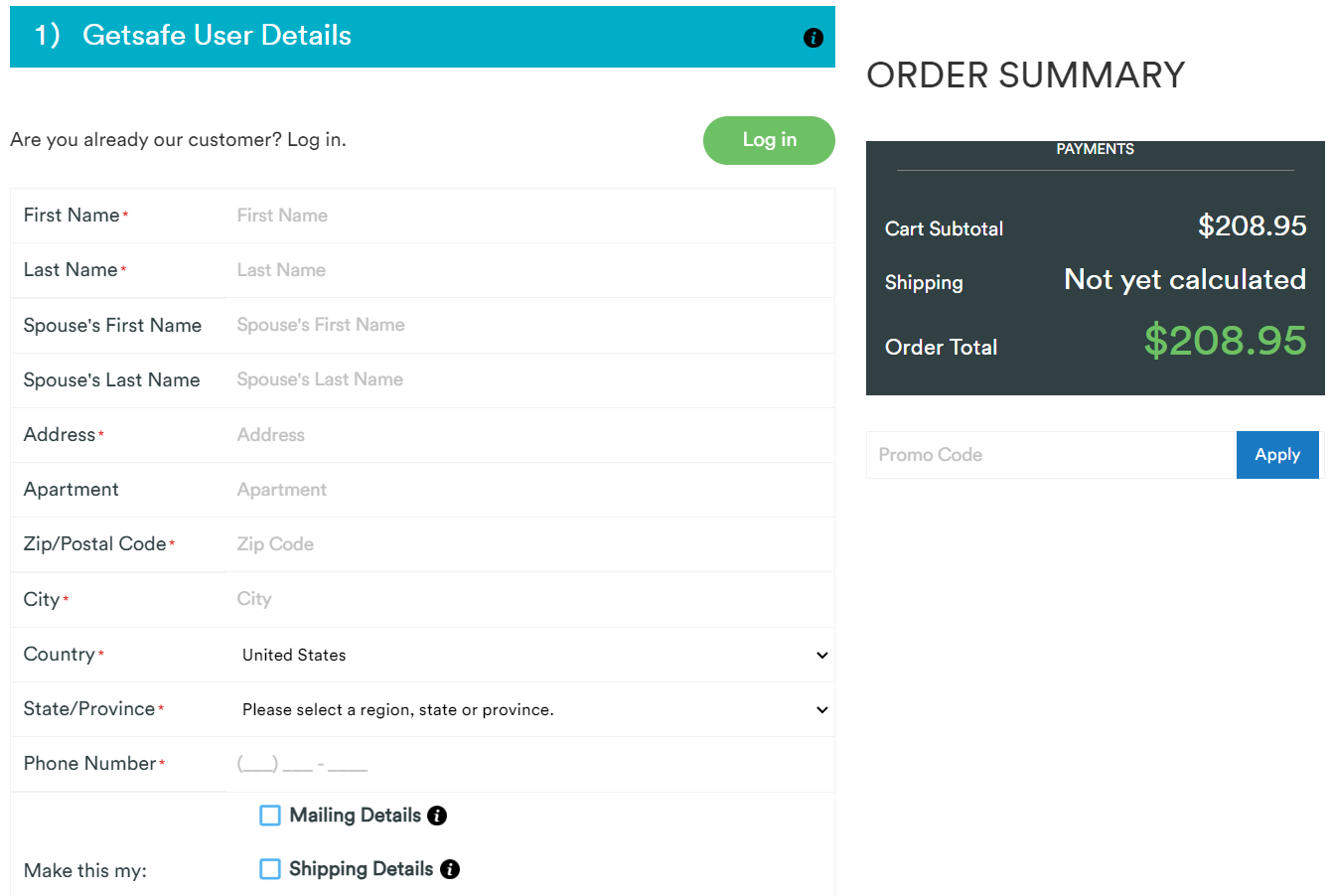
Source: getsafe.com
Finally, the “Confirmation” section summarizes all selected products and their respective costs. It re-emphasizes transparency and keeps customers in the loop.
Create Transaction Urgency
If you want to drive those second-guessing shoppers to hit ‘Checkout,’ there’s nothing like a ticking clock. Urgency in ecommerce is like a promotion for free hot sauce on your taco – it adds a delicious kick that makes customers want it immediately.
And let’s face it, concerns about costs, particularly shipping costs, are the culprit behind so many abandoned carts. They’re the equivalent of a giant stop sign for many online shoppers. This is where a well-placed “Free Shipping for a Limited Time” message can bulldoze a path straight to conversion.
The brilliance of this approach is twofold:
- Money-saver: It directly addresses a significant pain point, making the deal sweeter for the customer. Regular customers love to save a few bucks.
- Clock-ticker: The “Limited Time” part adds a sense of urgency. Shoppers feel compelled to act fast, turning their maybe-later into a gotta-buy-now.
It’s important to note that the aim of leveraging urgency isn’t to create panic. The aim is to help your shoppers realize that they stand to gain by acting swiftly, just like that “50% off for the next two days” sign at your favorite store – simple yet incredibly effective.
Enable Express or Guest Checkout
Do you remember when you were ready to buy, but the website demanded you sign up first? You probably don’t because, most likely, you clicked off.
In fact, according to the Baymard Institute, 24% of shoppers abandon a cart if forced to create an account. That means enabling express or guest checkout is not a mere nice-to-have; it’s a must-have.
Guest checkouts allow shoppers to remain incognito, which can be a relief for many who dread yet another username-password combo to remember. It also nixes the pain of filling out endless fields, providing a more streamlined, less burdensome UX. Moreover, it fuels impulse purchases. The faster the checkout, the less time for second thoughts.
Example
Mannequin Mall sells mannequins – a product that isn’t your typical everyday purchase. They offer a guest checkout option to simplify their checkout process and reduce friction. It’s fast, easy, and you can buy a product in a flash.
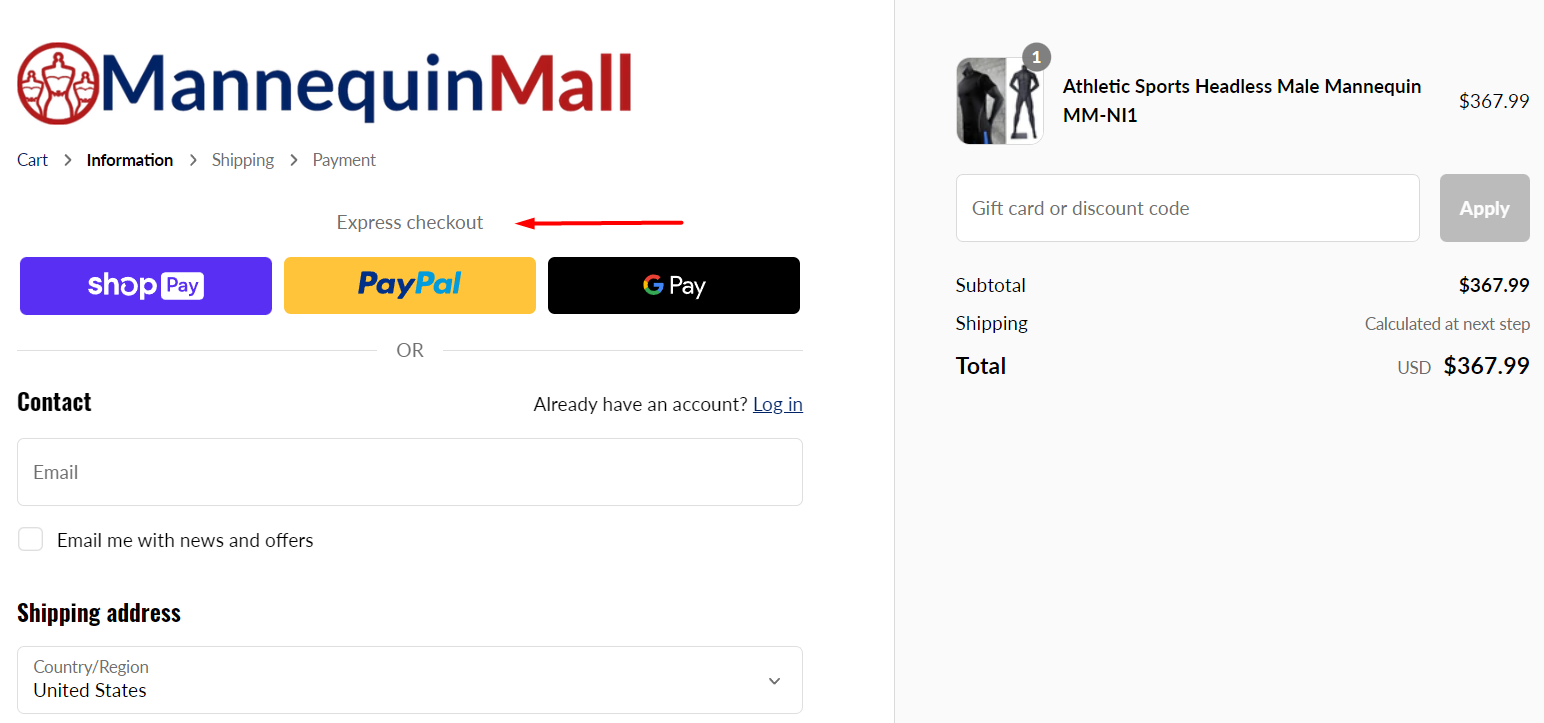
Source: mannequinmall.com
By implementing express or guest checkout, you can significantly reduce the number of abandoned carts. It’s like greasing the wheels of your shopping cart – suddenly, the journey toward completing a purchase becomes much smoother. And the numbers will show it.
Be Super Transparent About Costs
There’s nothing that torpedoes trust faster than unexpected costs popping up at the checkout page. In fact, 48% of online shoppers abandon their carts due to high extra costs during checkout. Cost transparency can save the day in this regard.
Being upfront about all costs, including shipping, taxes, and additional fees, sets clear expectations. Shoppers know exactly what they’re signing up for, and they appreciate it: no unpleasant surprises, no sudden turn-offs, just pure, straightforward shopping.
Transparency doesn’t just prevent cart abandonment; it builds long-term customer relationships. It’s about showing respect to your customer by being honest from the get-go. This nurtures trust and loyalty, and it leads to repeat purchases.
Example
A great example of a site that practices upfront cost transparency is Zappos. Renowned for its expansive shoe selection, Zappos eliminates hidden cost surprises.
On each product page, not only is the item’s price displayed, but they also emphasize their policy of “FAST, FREE Shipping.” This message is presented in prominent text on every product page, ensuring it’s one of the first things a shopper sees.
Zappos offers “a FREE 365-Day Return Policy,” which is also clearly mentioned on every product page. By providing these details upfront, they effectively remove potential obstacles that could lead to cart abandonment.
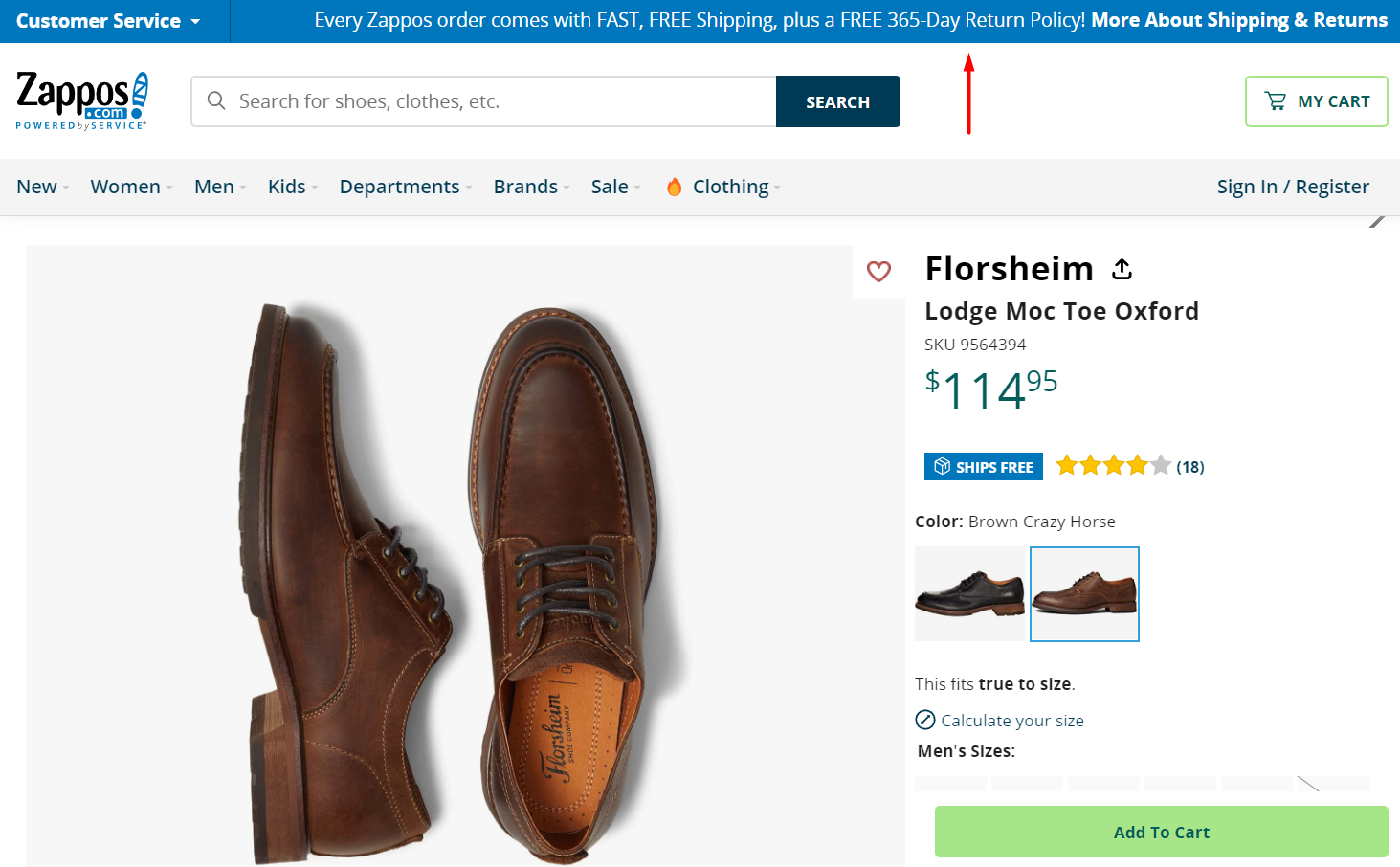
Source: zappos.com
So, it’s pretty simple – ditch the hidden charges, be transparent about all costs, and watch your conversion rates soar. Your customers will be much happier to pay for something when they know exactly what’s on the table.
Leverage Engaging Content
Engaging content can play a surprising role in reducing shopping cart abandonment. Quality content is vital in building an emotional connection with your shoppers and helps create a brand story that resonates with customers and encourages them to complete their purchases.
- Product Descriptions
Don’t just describe your products – sell an experience. Use compelling, engaging language that highlights the unique benefits of your products. Make your shoppers feel they’re not just buying a product but a solution or a lifestyle. - Visual Content
High-quality photos and videos can significantly boost product appeal. Augmented reality (AR) and 3D images, which are increasingly popular among ecommerce brands, allow shoppers to “experience” the products before buying, reducing uncertainty and cart abandonment. - Customer Reviews and Testimonials
Social proof is a powerful persuader. Showcase user reviews and testimonials prominently. Positive customer experiences can reassure potential buyers and push them toward completing a purchase. - Educational Content
Blogs, how-to guides, and FAQ sections answer questions and address consents shoppers may have about your products. By providing this information upfront, you can reduce hesitation and instill confidence in your customers.
Engaging content can elevate your brand, establish trust, and inspire your customers to hit that “Checkout” button. It’s all about creating a narrative that pulls your customers in and keeps them engaged throughout purchase completion.
Example
Look at REI (Recreational Equipment, Inc.), an outdoor clothing and equipment retail company renowned for its engaging content strategy.
REI doesn’t just sell outdoor gear; they sell the spirit of adventure. Their product descriptions weave a story, not just about the item, but about the experiences it can unlock for the buyer.
They add high-quality images and videos showing their products in action. This highlights their products’ features and helps shoppers visualize their adventures.
But REI’s engaging content doesn’t stop at their product pages. They also host extensive “Expert Advice” learning libraries next to each product category. They’re full of how-to guides, gear checklists, and articles on various outdoor activities.
This educational content is invaluable in answering potential questions and resolving uncertainties for shoppers. Thus, it positively influences the company’s efforts to minimize its shopping cart abandonment rate.
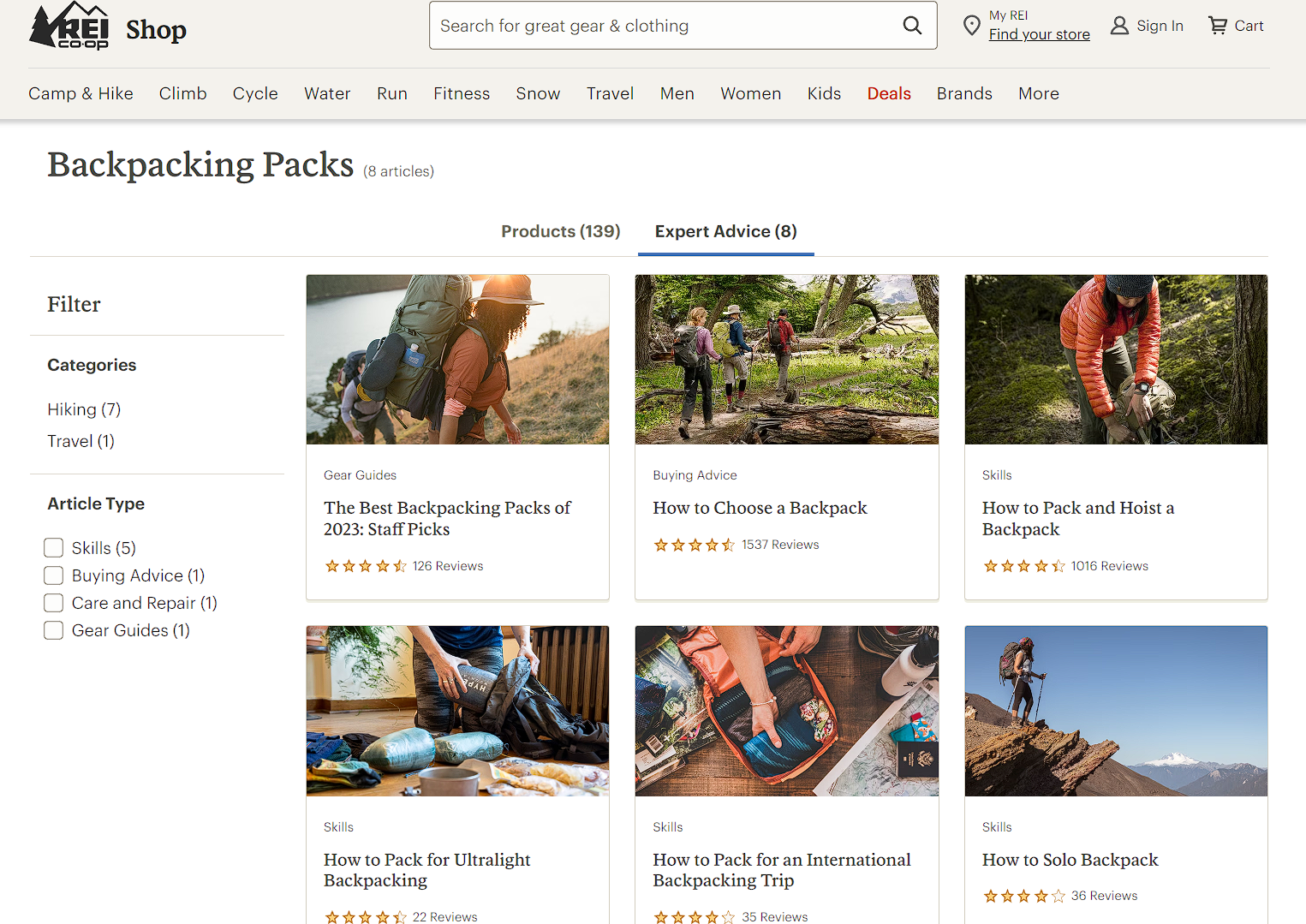
Source: rei.com
Utilize Analytics and Customer Feedback
Your online store isn’t a set-and-forget kind of project. It’s a living, breathing entity that needs constant tweaking and improvements. This is where analytics and customer feedback become your best friend.
With analytics, you can uncover the blind spots in your customer journey. Tools like Google Analytics and Hotjar allow you to track and understand user behavior. They’re great for uncovering insights such as where users drop off or what elements of your site they interact with the most.
Meanwhile, customer feedback is a goldmine of qualitative data. Regularly survey your customers and solicit feedback to understand their experiences, preferences, and pain points. Tools like SurveyMonkey, their alternatives and Typeform can make this process a breeze.
Analyzing this data will help you uncover trends, identify common issues leading to cart abandonment, and reveal opportunities for optimization.
Perhaps your product images need better resolution, or your site’s load time is too slow. Maybe your payment options are too limited. Whatever it is, data will help you find it.
As you iterate and improve based on these insights, you’ll see a gradual decline in cart abandonment rates and a spike in your conversion rates. Data doesn’t lie – listen to it, act on it, and watch your ecommerce business flourish.
Final Thoughts
That’s the lowdown on reviving lost opportunities with a killer abandoned cart recovery strategy. It’s all about being proactive, implementing savvy on-site tools, employing retargeting ads, and putting the spotlight on your UX design.
Creating a sense of urgency, allowing express or guest checkouts, and being a straight shooter regarding costs are your weapons against the cart abandonment plague. Make no mistake: these are no quick fixes. They require time, effort, and a better understanding of your shoppers’ needs and pain points.
But when you see fewer abandoned carts and more sales, you’ll know it’s all been worth it.





